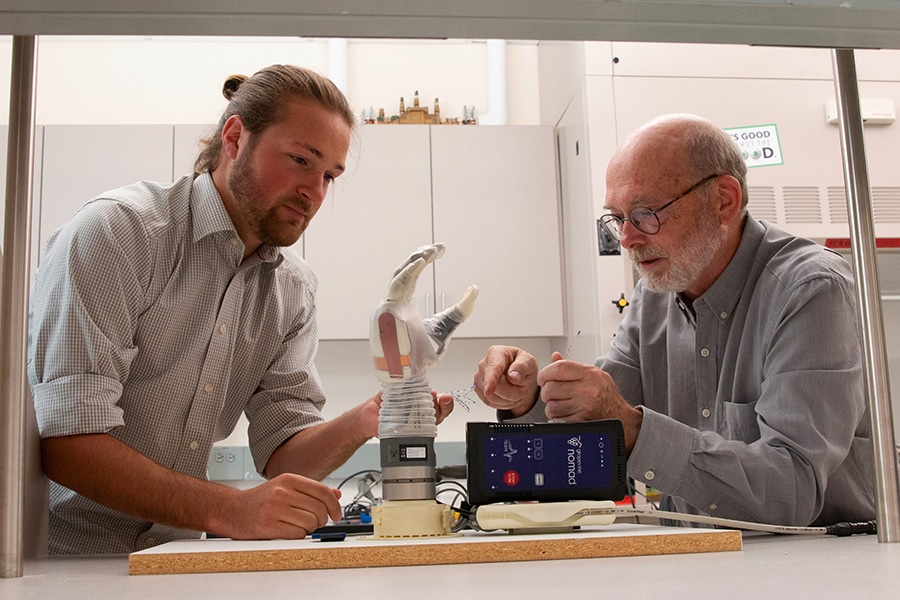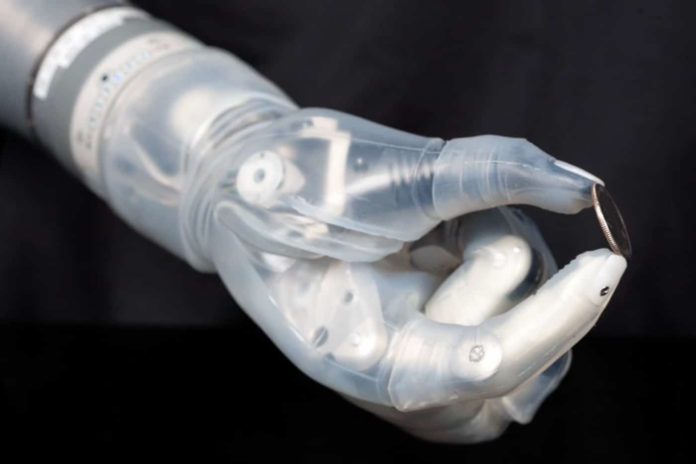For helping amputees regain the sense of touch, a lot of efforts has been made so far. Despite the increasingly advanced developments in the field of prosthetics, it is always tricky to overcome this hurdle known as ‘sense of touch.’
However, now it seems like this could be changed, all thanks to a biomedical engineering team at the University of Utah who has developed a prototype arm with the ability to link to an amputee’s nerves. The team has developed the “LUKE Arm,” inspired by robotic hand that Luke Skywalker got in ‘The Empire Strikes Back.’ The prosthetic arm mimics the way a human hand feels objects by sending the appropriate signals to the brain.
After being in development for about 15 years, the robotic arm is now able to returns function and feeling to its users by signaling the nervous system via peripheral nerve stimulation.
The arm is made of mostly metal motors and parts with a clear silicone ‘skin’ over the hand. It is powered by an external battery and wired to a computer. The team has developed a system that allows the prosthetic arm to tap into the wearer’s nerves, which are like biological wires that send signals to the arm to move.

Called the Utah Slanted Electrode Array, the system is a bundle of 100 microelectrodes and wires that are implanted into the amputee’s nerves in the forearm and connected to a computer outside the body. The Array is also capable of sending the signals like the sense of pain and temperature.
The array interprets the signals from the still-remaining arm nerves, and the computer translates them to digital signals that tell the arm to move. It takes a little bit of training as everyone’s neural activity is different, but gradually, the software learns the user’s neural signals for controlling the prosthesis.
The LUKE Arm has sensors that can simulate the feeling and pressure of touch. “Just providing sensation is a big deal, but the way you send that information is also critically important, and if you make it more biologically realistic, the brain will understand it better, and the performance of this sensation will also be better,” says Professor Gregory Clark.
Here, the team used mathematical calculations along with recorded impulses from a primate’s arm to create an approximate model of how humans receive these different signal patterns and then implemented into the LUKE Arm system.
Future work involves developing a version that is completely portable and does not need to be wired to a computer outside the body. Instead, everything would be connected wirelessly, giving the wearer complete freedom.
The study is published in Science Robotics. LUKE is now available for purchase in the U.S., but you can only buy it from or on the order of a licensed healthcare professional.
